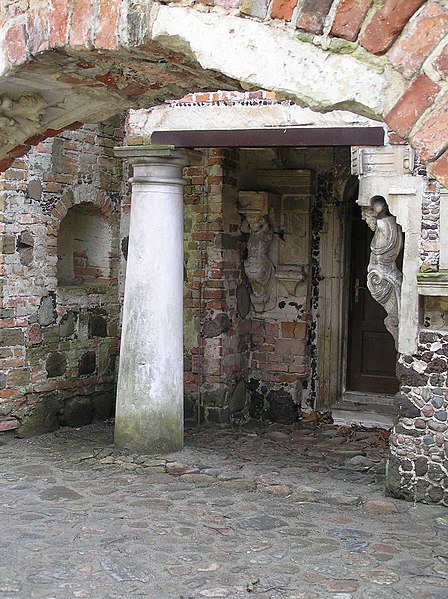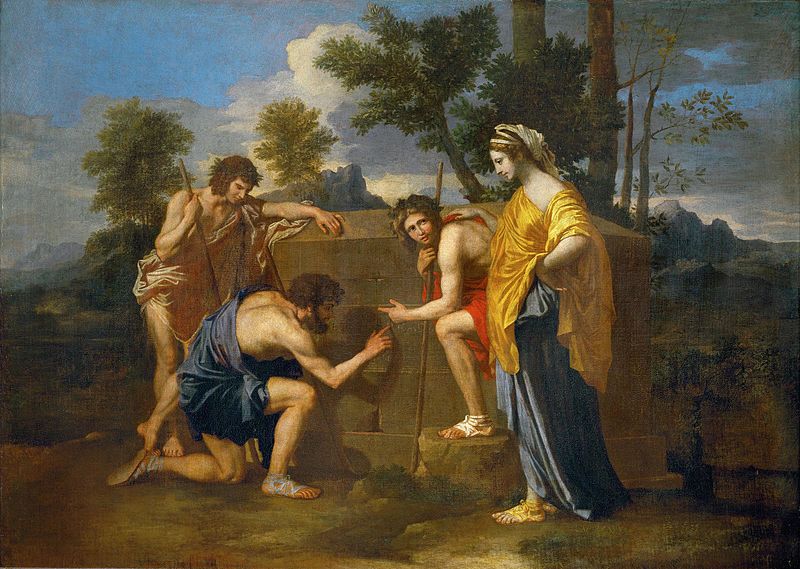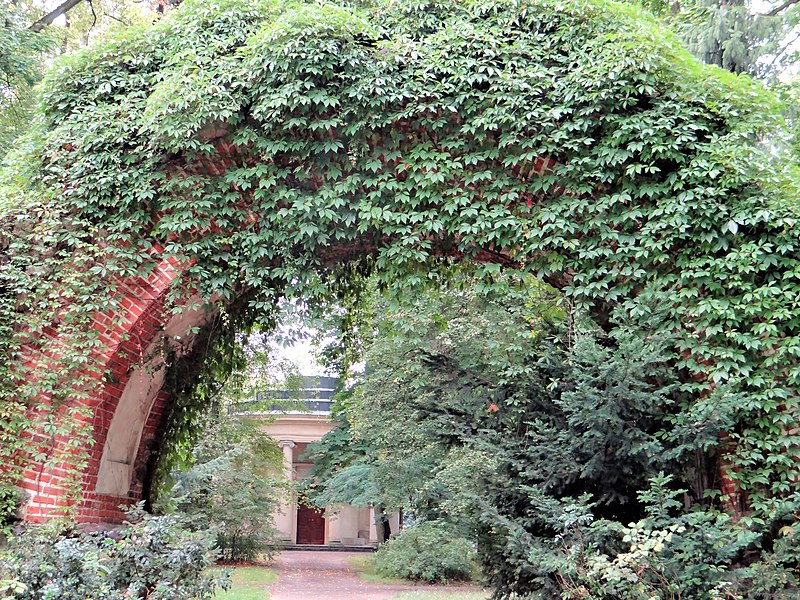I said at the end of my previous posting that I didn’t intend a long gap before publishing a second ‘Arkadian’ posting. A week and a day has passed – not a long delay but longer than I’d anticipated thanks to a few things that delayed me, including trying to get the paper I’m writing in shape, and, then, acting on an idea I had at the end of last week to revive 30th October as the ‘International Day of Medusa’.
I did this, along with several colleagues in the Our Mythical Childhood community, and the results are on twitter at #InternationalDayOfMedusa
One reason for Medusa having being in my thoughts is this: once I have made further progress with activities for autistic young people involving Hercules, I am planning a second set, involving Medusa. But for now… more Hercules – this time a Hercules introduced via Arkadia: an Arkadia I was preparing to visit in May 2020.
‘I will be in Arkadia’?
What a month May 2020 looked set to be for the Our Mythical Childhood community as we prepared to gather in Poland for the last of a series of conferences. This one was to follow in the wake of ‘Our Mythical Hope’ (May 2017) and ‘Our Mythical History’ (May 2019), marking the ‘Our Mythical Nature’ phase of our collaboration. We were to meet in various venues at the University of Warsaw for workshops and panels on, among other topics:
- environmental issues in classically-informed works of children’s culture
- how nature is expressed variously as escapist and dangerous
- how nature is represented as somewhere whose otherness can resonate with the experiences of children as they negotiate the world.
We were also going to be directly experiencing nature as a contradictory, cultivated, seemingly ‘natural’, allusive space where the natural world, the landscaped world and what it is to be human collide. For we were going to go to Arkadia.
The Arkadia in question was the garden of Helena Radziwiłł (1753-1821), located around an hour’s drive from Warsaw, near Nieborów. The garden was designed at the time of the eighteenth-century thirst for creating and experiencing landscape gardens as spaces for contemplation.
 |
Helena Radziwiłł's garden Arkadia in Poland.
Photo by TenKobuz, sourced from Wikimedia Commons here
|
A few years previously, I had read Michael Moran’s reminiscences of his visit in the early 1990s in his A Country in the Moon: Studies in Search of the Heart of Poland. Here, Moran recalls ‘[l]ying on the grass in the sun’ amid ‘[a] world of intense impressions, melancholy, poignancy and reflective thoughts’ (pp. 284-5). More recently, I had read James Stevens Curl’s study of Arkadia as a ‘Garden of Allusions’ where visitors could become ‘actors’ in a landscape dividing into ‘scenes’ against a backdrop where ‘activities could take place […] triggering a response’ as they were invited to ‘decode the meaning enshrined in the scenes’ (p. 93). As I put it myself, around the time I had been due to visit Arkadia, ‘Gardens, like theatres, are curious spaces where though encounters with other possibilities and other – alien - worlds we confront or contemplate our own.’
 |
Sanctuary of the High Priest, Arkadia.
Photo by Seacale, sourced from Wikimedia Commons here
|
Looking ahead to my own time in such an alien, yet not unfamiliar, world, I intended to pause particularly at the possible place where, close to the Temple of Allusions – a monument to the memory of Radziwiłł’s daughters, who died young – there was once a sarcophagus inscribed with the allusive phrase: ‘et in Arcadia ego’, suggestive of time once spent amid a bucolic landscape now lost. This inscription suggests too Nicolas Poussin’s painting Et in Arcadia Ego (1637-38).
 |
Nicolas Poussin, Et in Arcadia Ego (1637-38), the Louvre.
Photo by The York Project, sourced from Wikimedia Commons here |
The allusions are all the more evocative inscribed in a garden literally called Arkadia:
- 'Et in Arcadia ego' might as evoking memories of a lost paradise: ‘even I was in Arcadia’
- As there is no verb, 'Et in Arcadia ego' could suggest ‘even I am currently in Arcadia’.
- Alternatively, suggesting future rather than past or present time amid the landscape, the phrase could evoke the time when ‘even I will be in Arcadia’.
I planned to contemplate another inscription, too, where Nature is related to Antiquity to reflect on life and, possibly, death. The inscription, in French this time is beneath a bas relief in the High Priest’s Sanctuary where Hope feeding a Chimera. It reads ‘L’espérance nourrit une Chimère et la Vie S’ecoule’ ‘Hope nourishes a Chimera [a Dream? an Impossibility? a delusion?] while Life flows [or ‘flows away’, or ‘ebbs’]’.
 |
Inscription beneath bas relief in the High Priest's Sanctuary, Arkadia.
Detail of photo by Jolanta Dyr, sourced from Wikimedia Commons here. |
Remembering Stourhead
My anticipation at the prospect of experiencing such a place for reflection and contemplation was heightened due to connections between Arkadia and one of its models –– a garden closer to home for me – Henry Hoare’s Stourhead in Wiltshire, around two hours’ drive from where I live in Surrey.
 |
Stourhead Gardens viewed from the Grotto.
Photo by Eugene Birchill, sourced from Wikimedia Commons here |
Stourhead epitomises the eighteenth-century engagement with Antiquity and Nature, and where, as would come to the case for Arkadia, each visitor might find their own meanings in a landscape of grottos, intriguing inscriptions, temples and statues. Some, notably Kenneth Woodbridge, have argued for a singular meaning behind the design of the garden. But, as others, such as Oliver Cox, have responded, it is more likely that the design is intended to let each visitor respond on their own terms, aided by certain pro(m)p(t)s and encoded messages. In a paper I delivered at Stourhead itself (that was in November 2015 – approaching 7 years ago…), I unpicked one of the possible sets of messages. This set begins, as I traced it – building from Michael Charlesworth’s study of Hercules at Stourhead, in the Pantheon (1754-57) with the temple’s showpiece statue, John Rysbrack’s version of the Farnese Hercules.
 |
The Farnese Hercules, Archaeological Museum, Naples.
Photo by Paul Stevenson, sourced from Wikimedia Commons here |
 |
John Michael Rysbrack, Hercules (between 1745 and 1752), Yale Center for British Art.
Photo: Yale Center for British Art, sourced from Wikimedia Commons here |
This contemplative Hercules is positioned between statues of two female figures – also by Rysbrack – denoting Flora and Ceres. I explored how this placement might have evoked a mythological episode that, ‘Englished’ by the time of the design of Stourhead, concerns Hercules as he enters a new place, one that is peaceful and strange. As I set out, it is a place where, according to the earliest ancient version, in Xenophon’s Memorabilia of Socrates (2.1.21), the hero ‘sat, pondering, about his future’. This was a time when how he would live his life was not fixed and when there is more than one possibility. The possibilities are framed in extreme terms:
- Would he lead a life of struggle?
- Would he lead a life of pleasure?
In this place, Hercules meets the personifications of the values named Arete (‘Virtue’) and Kakia (‘Vice’) in Xenophon, and who by the eighteenth century had come to be connected with competing claims of Hard Work and Pleasure. I rehearsed how, choose one path and his will be a life of constant hard work, but which leads to eventual rewards of a famous name and an afterlife among the gods. Choose the other path, meanwhile, and, as I outlined, his will be a life of constant pleasure.
I set out that this aspect that any allusions to the Hercules’ encounter with the two personified virtues might connect with one of the paintings in Stourhead House – another painting by Poussin evoking various layers of Antiquity and Nature. This is his Choice of Hercules (c. 1636 or 1637), painted around the same time as Et in Arcadia Ego, perhaps a little earlier.
 |
Nicolas Poussin, The Choice of Hercules (c.1626-1637),
Stourhead House, National Trust. Photo by artuk.org,
sourced from Wikimedia Commons here |
Above all, I considered how, on leaving the Pantheon, visitors might have been being invited to enact their own version of Hercules’ Choice by needing to choose between two paths:
- a harder path up a hillside to the temple of Apollo (1765) which commands a striking view over the Park.
- an easier one leading to Stourton village, with its amenities including the inn.
Either choice, then, can result in a welcome outcome. There is no right path, and no wrong path. As for Hercules, what – I asked - did he choose? Again, as I said, there is no right or wrong answer:
- His path in life is one of hard work – of labour after labour.
- His life is one of pleasure as well.
He is the great sufferer and doer of deeds. He is also the great lover of food and drink and partying. I considered how, between the Herculean extremes, space is provided for reflection on how to find a balance between the demands of Hard Work and the temptations of Pleasure. Thanks to my fellow speaker at the conference in Stourhead, Dr John Harrison, who was also the organizer of the event, another option was opened to me – namely that the identities of the women on either side of the Rysbrack’s Hercules suggest not just Nature but different types of Nature that correspond to Hard Work and Pleasure. Here is how John puts it in a poster that, by coincidence, appeared in my email feed yesterday, just when I was trying to tease various meanings suggested by Herculean depictions and allusions at Stourhead: ‘Flora and Ceres are deities of natural and cultivated foods respectively and may thereby represent indolence and industry’.
I am now wondering whether Poussin’s Et in Arcadia Ego might itself be offering two women who are in keeping with those that Hercules experiences. Like his Virtue, the woman on the painting of 1637-38 is fully clothed. But there was also an earlier, 1627, painting of the same name where, like Vice, there is a partially nude woman. As in the Choice of Hercules, the two women stand on opposite sides.
 |
Nicolas Poussin, The Choice of Hercules (1627), version in Chatsworth House.
Photo sourced from Wikimedia Common here
|
As in the Choice of Hercules, the two women stand on opposite sides from one another. I'm going to think though the significance of all this...
Nicolas Poussin,
The Choice of Hercules: earlier (l.) version with
woman on left; later (r.) version with woman on right
Looking ahead to Hercules indoors
What I was saying about Stourhead and its Herculean allusions was building from existing work. Where any key originality came in was in the case I made for another instance where the viewer is invited to contemplate Nature and contrasting values though by enacting the Choice. I’ll get there in my next posting – for now I’ll say that:
- the Choice in question is found on a chimneypiece panel in an eighteenth-century villa at Roehampton.
- I have discussed that depiction more than once on this blog
- There is a redrawing of this depiction, with colour added, in the drawing by Steve Simons that heads this blog.
More soon...


















